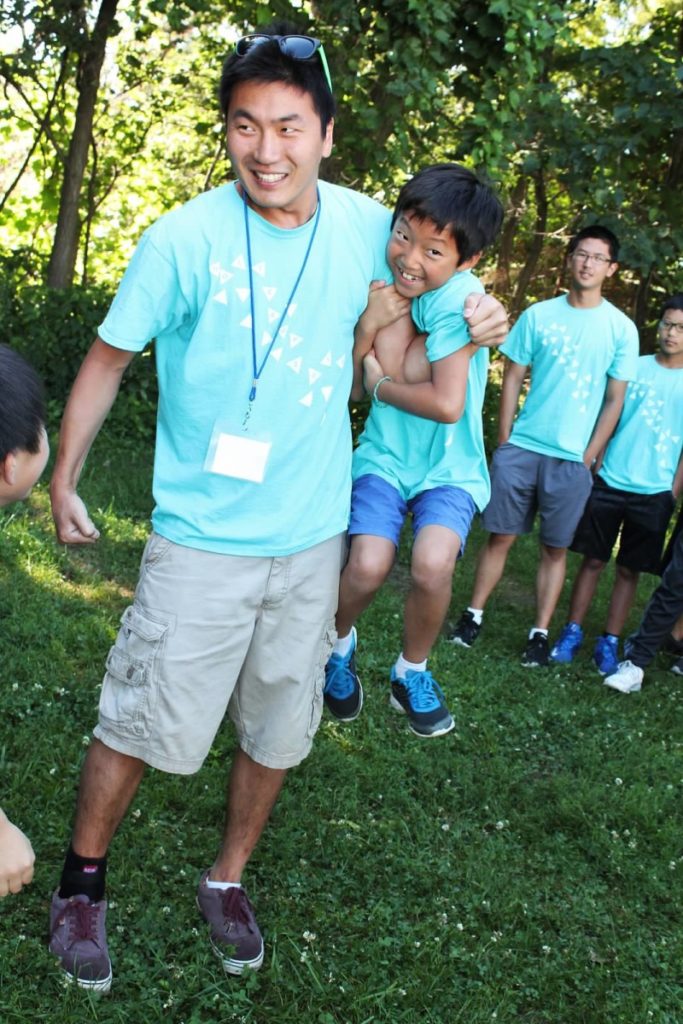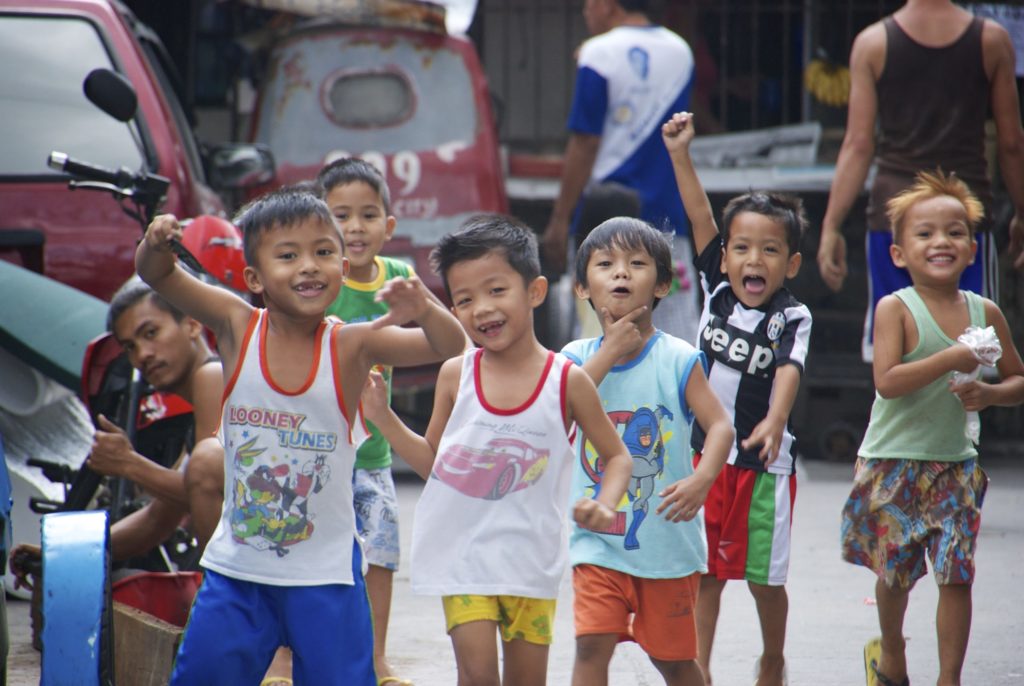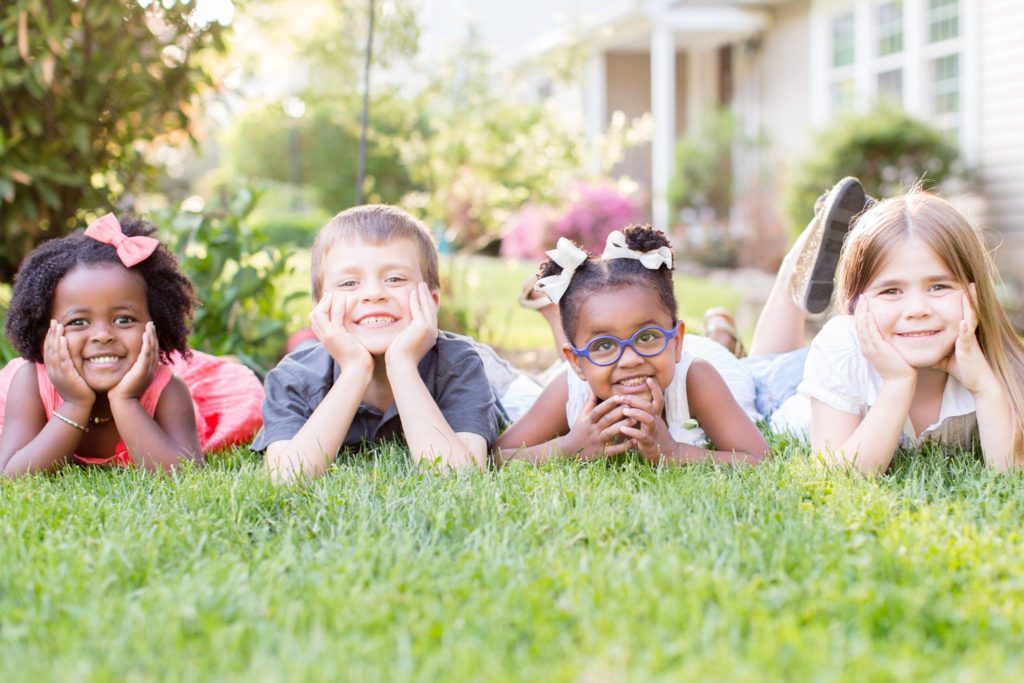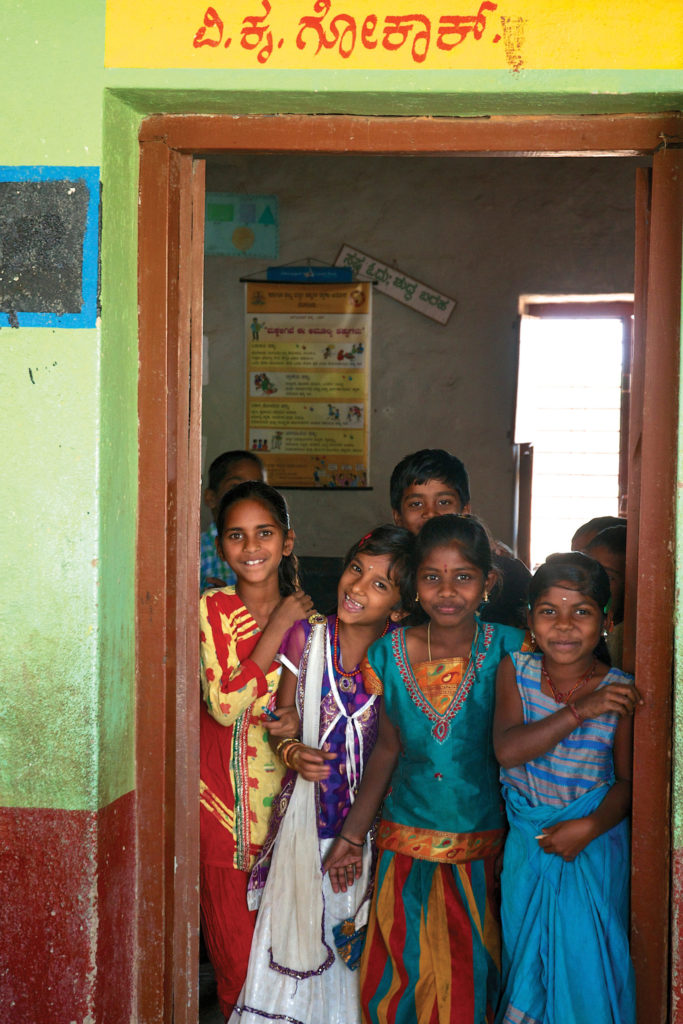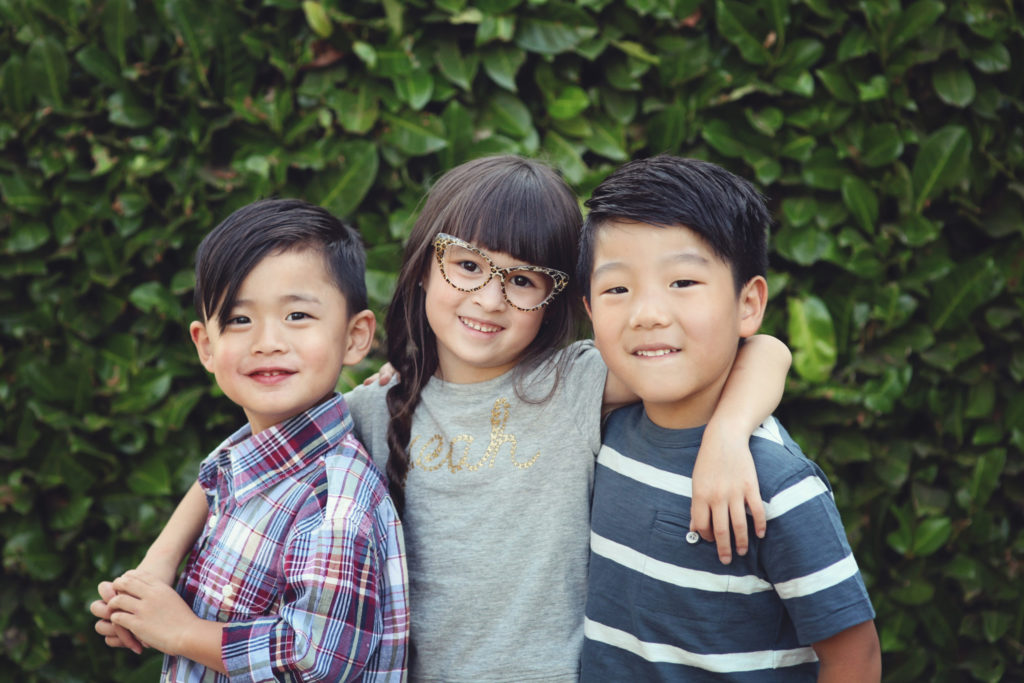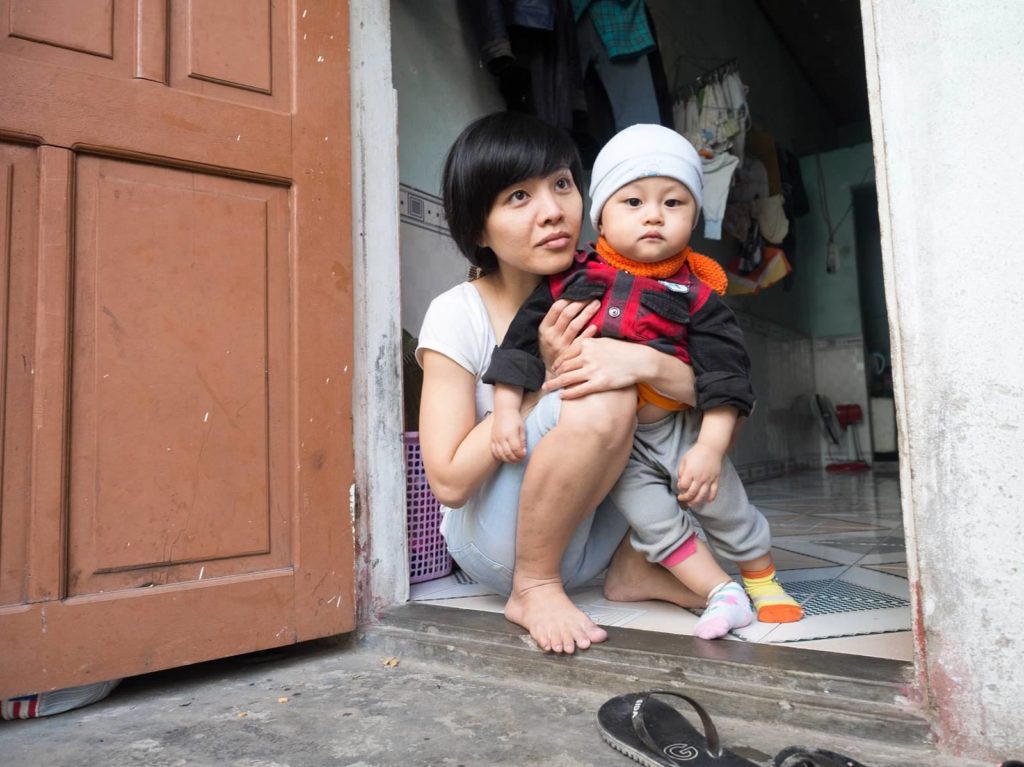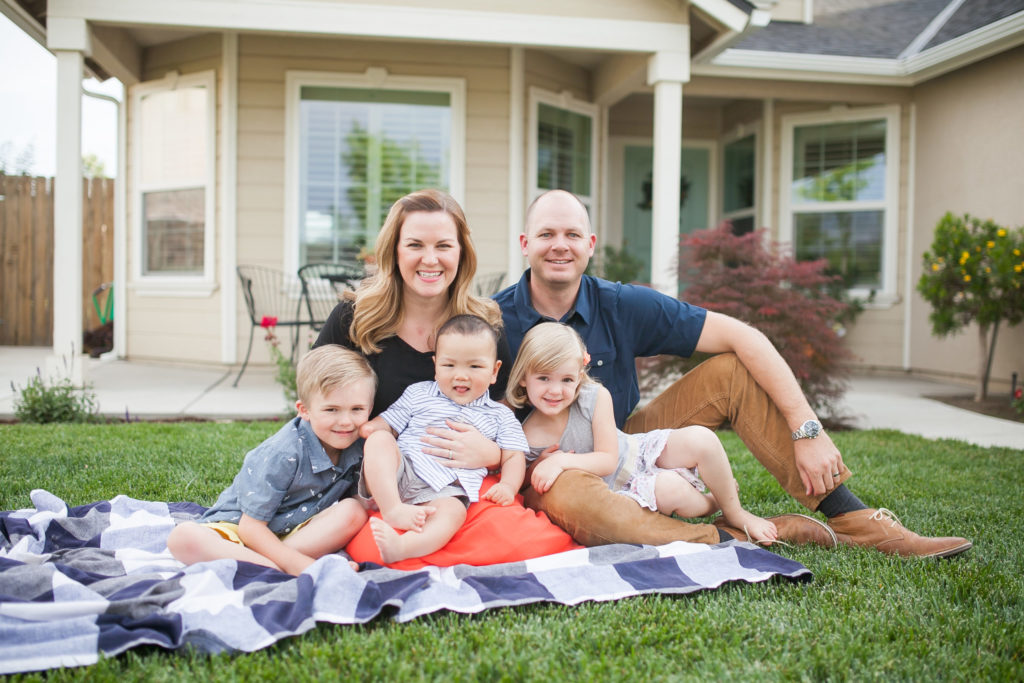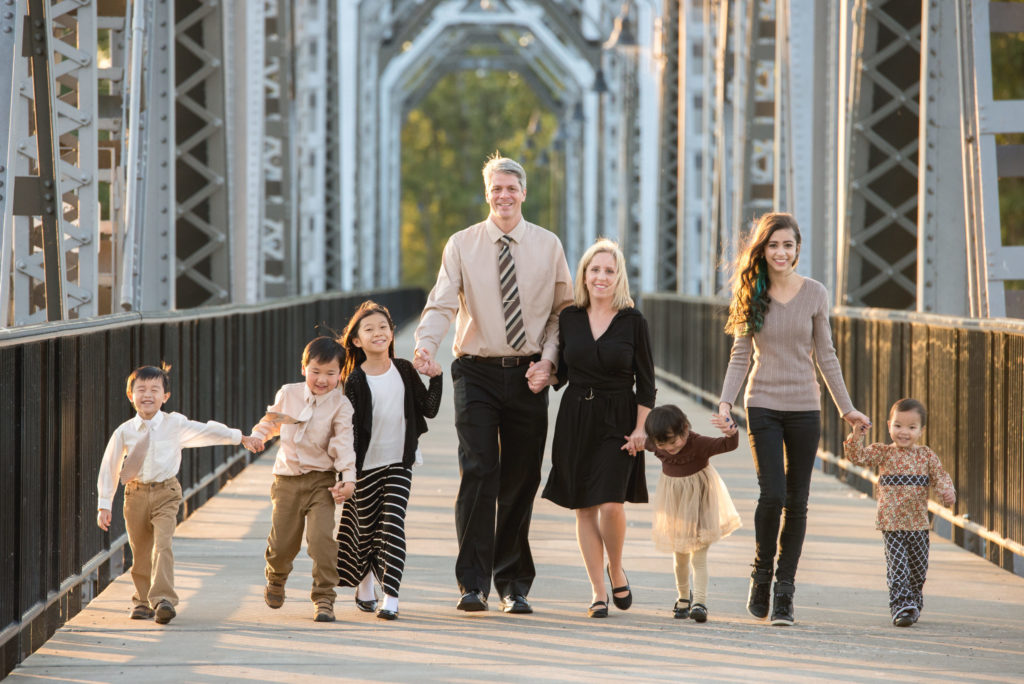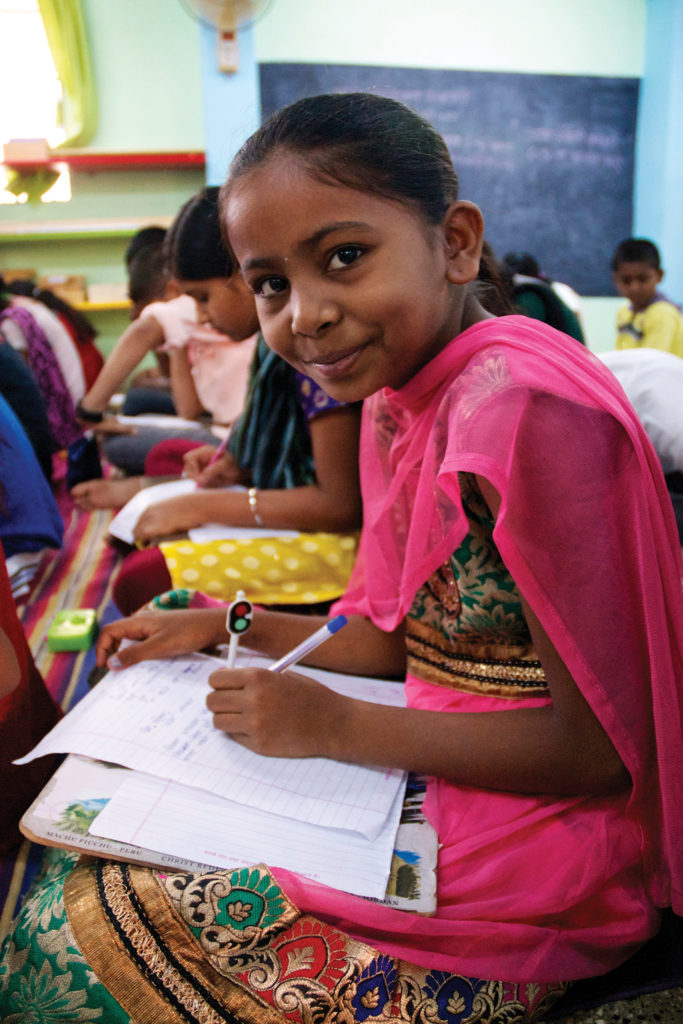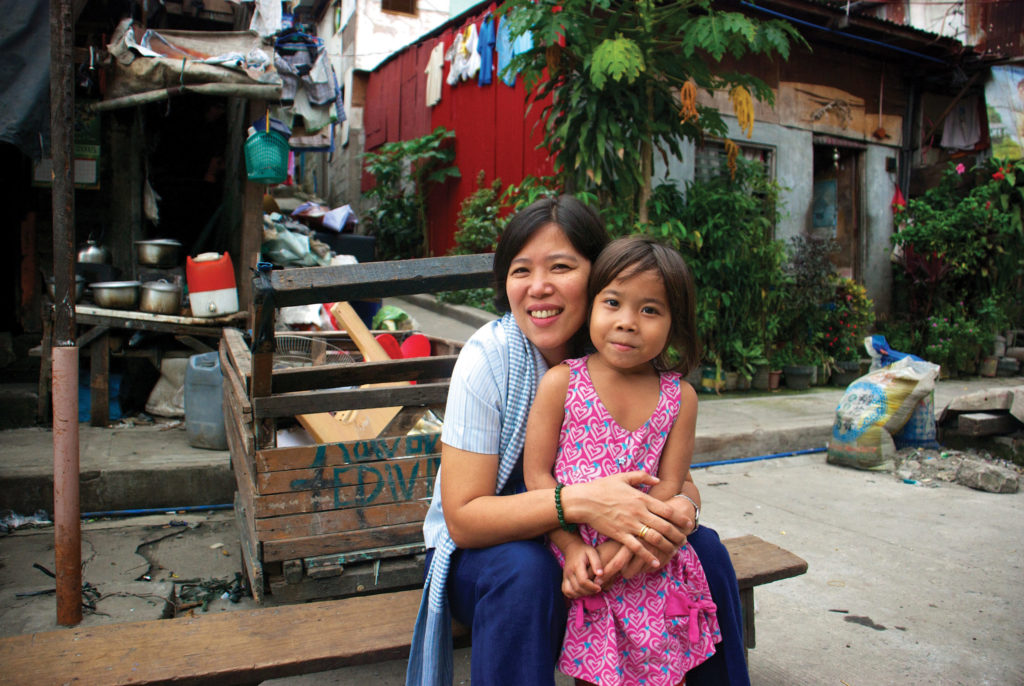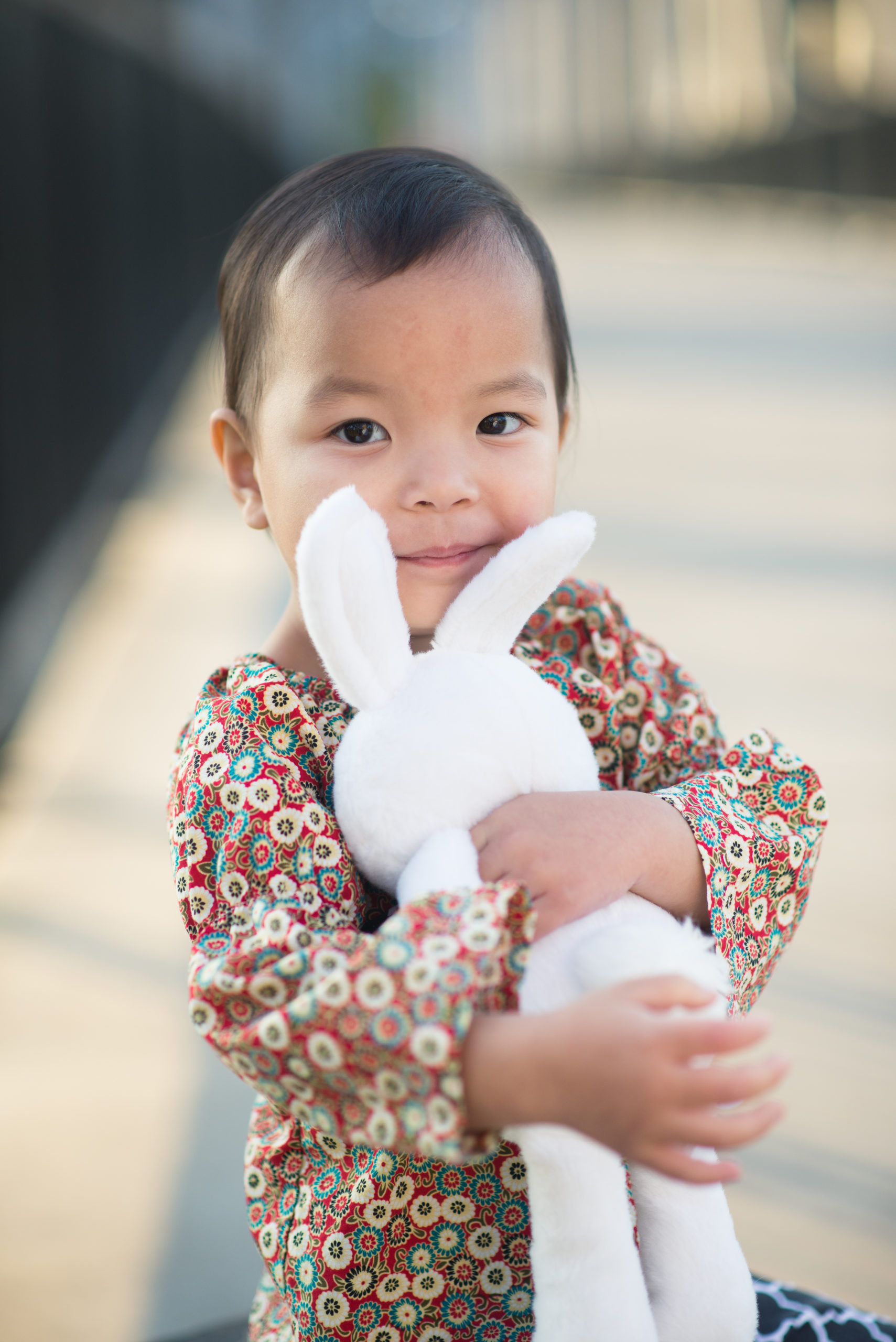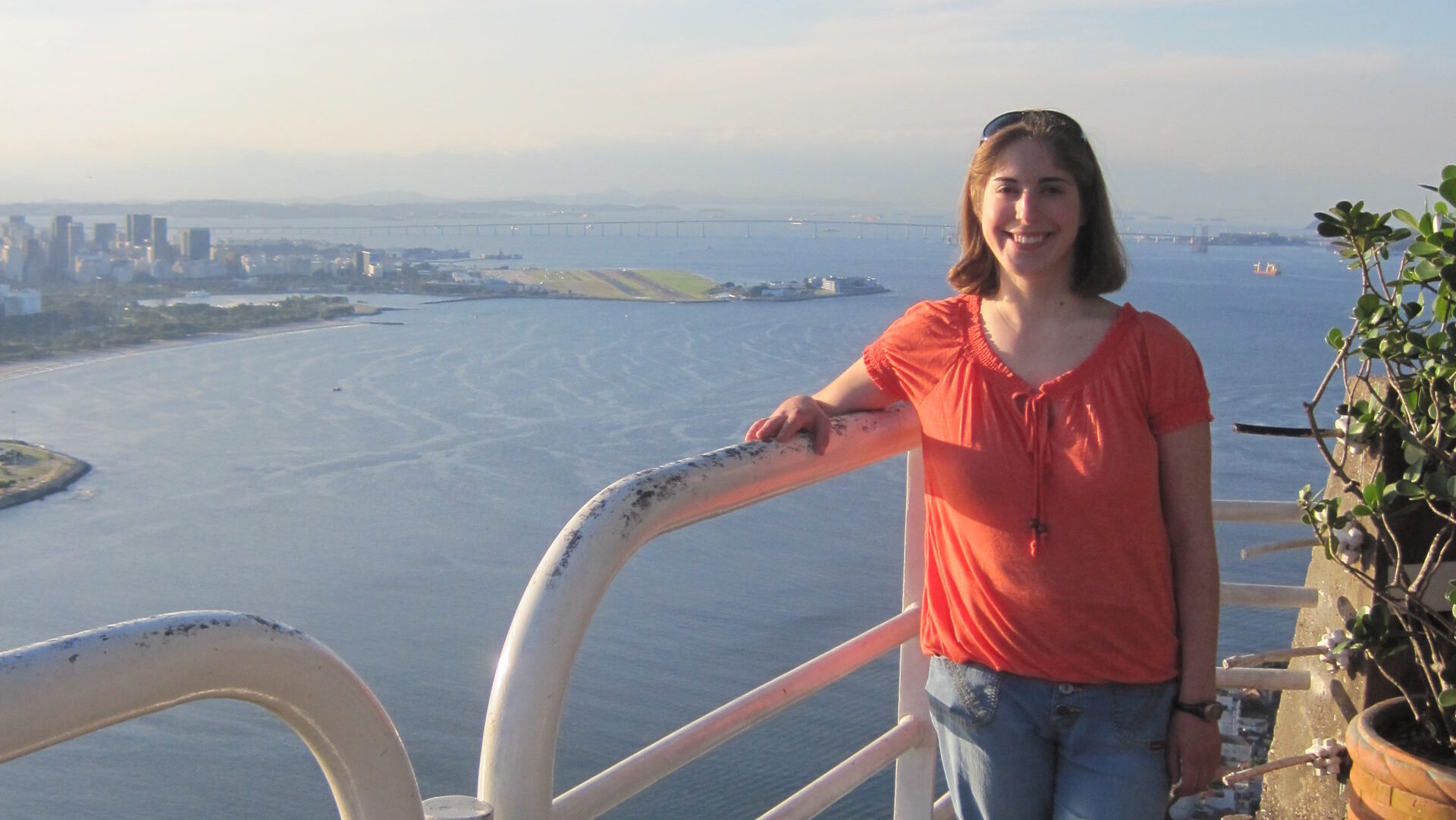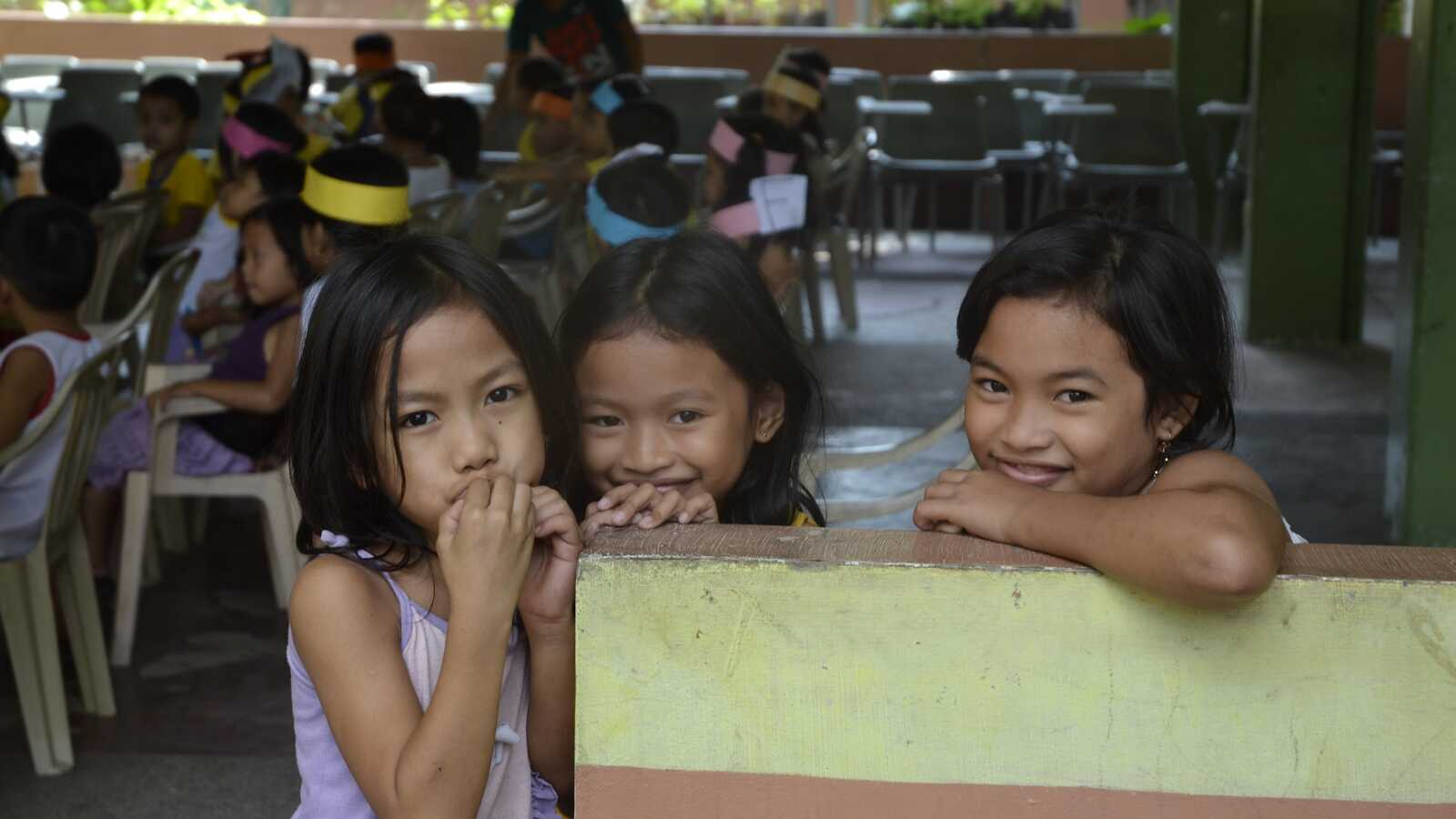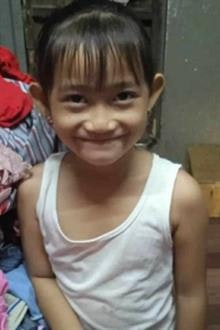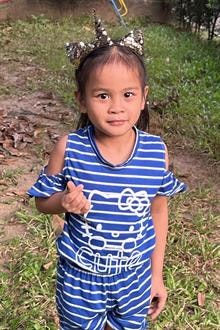We all love feel-good stories. At Holt, we are surrounded by miracles, triumphant underdog tales and inspiring success stories every day. But sometimes, the best stories aren’t told through words. Today, we look back at a few of our favorite stories of hope, love, family and incredible, life-changing impact — not told through words, but pictures.
Photo 10: Summer Camps
Every summer, Holt Adoptee Camp is both fun and inspirational for the kids and teens who attend. At four sleep-away camps across the country, adoptees spend a week hiking, swimming, playing games and enjoying evenings around a campfire with fellow transracial adoptees and adoptee counselors. This is a time and place for adoptees to just be themselves, surrounded by other people who share similar stories and family histories. Together, they explore identity, race and other adoptee-specific topics in an open, safe setting. Mostly, they have fun! In the photo below, 2015 camp director Chris McGinn — who will return to direct camps in 2016! — serves as jungle gym and friend to 9-year-old Adam Wachner during camp in Nebraska. In the background, 16-year-old Alec Zoz and 13-year-old Karl McGillvray sport Holt camp shirts specially designed by Holt camp counselors.
Photo 9: Community Development in the Philippines
In Manila, Philippines, Holt’s on-the-ground partner, Kaisahang Buhay Foundation (KBF), runs urban community outreach programs aimed at providing educational support to children and families living in impoverished neighborhoods. Staff from KBF regularly visit these neighborhoods with school supplies and other necessities for children, and they provide parent training courses for anyone interested in attending. After one such visit, a group of local boys started to dance and play for a Holt camera, and we were struck by their joy and infectious smiles. This photo reminds us that even in places of great need, happiness and joy can remain high — especially when families are equipped with the tools they need to raise healthy, happy, educated children.
Photo 8: National Adoption Month
Meka, 3, Joshua, 8, Medina, 3, and Katelyn, 7, outside their home in Maryland. Twins Meka and Medina were adopted from Ethiopia, and came home in August 2013. Mom and dad to four, Betsy and Jeff Squires describe their home as loud and busy — not unlike most families. We featured their adorable photo below as part of our National Adoption Month of Myth-Busting campaign. We love when we receive submissions that so clearly show the love of adopted brothers and sisters. However, Betsy and Jeff encourage anyone considering adoption to become informed about adoption-related issues, which was the entire theme of Holt’s 2015 National Adoption Month Campaign. Betsy says, “I would encourage anyone adopting to become informed about the realities of pain and heartache that come with the joys of adoption. Our children carry wounds with them and providing a loving home does not heal them. You need to be fully aware of the possibilities of trauma-related behavior and therapeutic responses that create the environment and relationships for healing to happen so our children can grow into their God-given potential. We love all of our children deeply and fully and it is hard work! Being prepared and with eyes to see their needs is vital!” Photo credit: AnnaGrace Photography.
Photo 7: India Community Outreach
In rural villages surrounding Bangalore, India, Holt’s on-the-ground partners provide regular training to groups of 500 or more local residents about hygiene, nutrition, abuse prevention and other relevant topics. Typically, local government officials or teachers from surrounding regions attend, too, hoping to gain knowledge they can share with families in their villages. This cost-effective outreach program is a tremendously successful approach to child and community development — enabling Holt’s partner staff to quickly but holistically arm both parents and leaders in impoverished areas with the knowledge they need to keep children safe from deadly illnesses, debilitating malnutrition and abuse, and also provide guidance on how to save money and improve local infrastructure, schools and hospitals. In turn, vulnerable families experience greater stability and become more confident about how to raise their children in a healthy, safe environment. In March 2015, the principal of one village school brought his entire class to hear Holt staff — including visitors from Holt’s U.S. headquarters office — speak about child nutrition. Afterward, the principal insisted that Holt’s staff visit his school, and they happily obliged. Many of the children followed, curious about the American guests. During the school tour, Holt’s Orphan Nutrition Program coordinator, Aloura DiGiallonardo, snapped this photo of giggling school children peeking out from their classroom.
Photo 6: Boys Need Families
Most people are shocked to learn that boys tend to wait longer than girls for an adoptive family. There are many reasons why this is true, but one of the strongest is that many potential adoptive families harbor the false perception that more girls are orphaned or abandoned than boys, and thus, more girls need families. Years ago, this was true. In the ‘90s, thousands of girls were abandoned in China as an unintended consequence of the country’s one-child policy. Today, however, better family planning and a stronger economy in China mean that fewer children are abandoned overall. Although very few healthy infant girls are abandoned — the profile most often requested by prospective families in the U.S. — those who are tend to be adopted by families in China. And, with a recent overturn in the one-child policy, child abandonment is likely to affect even fewer girls. Today, both boys and girls need families in about equal numbers. Almost all will have minor to major medical, physical, developmental or emotional needs. And because about 80 percent of families request girls, an overwhelming number of boys wait longer for a match. Despite these facts, the old perception that more girls need families persists! This leaves boys at a severe disadvantage — and not just in China, but in every country where we have adoption programs. This year, Holt International urgently needed families open to adopting boys — and we expect that need to continue into 2016 and beyond. To help find families for boys, we asked those who have previously adopted sons to write about the joys of parenting boys. We featured boys on nearly every adoption flier and brochure we created. We asked social media followers to help dispel the myth that only girls need families, and we advocated for boys at every turn. And then, we received the photo below of siblings Callahan, 4, Claire, 7, and Charlie, 6. Charlie and Callahan were adopted from Korea, and when we saw their darling faces and little dimpled smiles, we swooned. Their mother is a professional photographer, and she often photographs her children for fun. She agreed to send a slew of photos, and allow us to use those photos to advocate for children waiting for families — particularly boys. For that reason, photos of Callahan and Charlie — along with other photos submitted by adoptive families (seriously, we love ALL of them!) — appeared on our new adoption information brochures and applications, Thanksgiving cards and National Adoption Month myth-buster art.
Photo 5: Family Preservation in Vietnam
In DaNang, Vietnam, Holt’s local partners work to prevent child abandonment in high risk areas by providing vocational training and education to struggling moms. In the neighborhood where the image below was shot, many women have received funding and education to become hairdressers, seamstresses or small grocery stall owners. With steady income, these single and married women are able to better care for their children and provide steady income to their families — in many cases, serving as the financial head of their household. This added family income is enough to help families afford school fees and other basic necessities, empowering them to independently raise their children. The woman pictured here received funds to learn to sew and purchase an older sewing machine. Now, she and her husband are able to provide for all their son’s needs. Their story is a great example of how just a few hundred dollars in donations can successfully impact an entire family and strengthen a community. Because of the generosity of Holt supporters and the hard work of his parents, the little boy will likely be able to attend school regularly — an opportunity his parents never had — secure a good job and break the cycle of poverty forever.
Photo 4: Special Needs Adoption and Fundraising
We first met Amber and Tim Kanallakan in 2013, when they were fundraising to bring their child home from China. Since Tim is a prosthetist and orthotist, the Kanallakans felt called and prepared to adopt a child with a limb difference. However, they had no idea how they would finance their adoption. And, since they knew their child would have some special medical needs, they needed to consider the cost of providing him or her with healthcare once home. Tim was always sewing little straps and tools for his patients, and one day, he made a little hand-sewn, front pocket wallet from scrap material. That gave Amber and Tim an idea. They opened an Etsy shop, “Standard Goods,” where they started selling hand-made leather goods. In the first month, they raised $1,200 toward their first $5,000 goal. They also held garage sales, bake sales and other fundraising events, and they blogged about their experience. They asked friends and family to donate items, and every purchase came with a card sharing their adoption story. By December 2014, the Kanallakans had fundraised nearly the total cost of their adoption, and they were matched with Oliver, a sweet 7-month-old boy with malformation of the right hand. They traveled home in early 2015. Today, the Kanallakans continue to advocate for children in need — sharing their adoption story on social media and dispelling myths about special needs adoption. They appeared on the cover of our 2015 annual adoption edition of Holt International Magazine, and again reminded families not to fear the unknowns in adoption. “When we visited Oliver’s orphanage in China, there were just so many children who needed families,” Amber says. “So many of them have been listed as ‘special needs.’ That label has a really harsh stigma. But holding the children and feeding the children, that changes everything.” Today, Oliver is thriving with his parents, Amber and Tim, and his siblings, Sawyer and Jane.
Photo 3: The Heart Warriors
In December 2014, we shared Rini’s story. She is the youngest of six children — five of whom were adopted from China through Holt, and four of whom came home with varying degrees of congenital heart disease. Rini was born with complex single ventricle heart disease, and nearly died before her adoption process was complete. Parents Andrea and Eric brought her home in record time — just over three months after they applied to adopt her — in a desperate race to save her life. Rini was in ICU when they arrived in China, and it took a miracle to complete her process and bring her home. Rini was admitted to the Doernbecher Children’s Hospital in Portland, Oregon directly from the airport. Her prognosis looked grim, and the family met with hospice, and put their daughter’s life in God’s hands. During their time in the hospital, they met other families who had lost children or were fighting for the lives of children adopted in China with heart disease. Those stories broke their hearts. Miraculously, Rini survived thanks to a heart transplant and was able to finally go home on February 25, 2014 — six months after arriving in the United States. Today, Rini is a healthy, active little girl, pictured here on the far right, and you can read an update on her here. However, her parents remain haunted by the children — especially those from China with heart defects — who are not as lucky. Dedicated to ensuring children with CHD receive the lifesaving care and loving families they need, Andrea has advocated for hundreds of children from China and mentored potential adoptive families about the reality of adopting and raising a child with heart disease. She now serves as the executive director of Little Hearts Medical, an organization that brings lifesaving cardiac care to orphaned and vulnerable children in China. We caught up with Andrea again in November 2015, and were again inspired by her dedication to children in need. Truly, Eric and Andrea — and the adoptive families and cardiac doctors that make up Little Hearts Medical — are the heart warriors of 2015!
Photo 2: Girls’ Education
In 2015, Holt spotlighted our programs for women and girls in a big way. That’s because we understand how critical and effective women are at creating lasting, sustainable change in their families, neighborhoods and the world. In regions most affected by poverty, women and girls have the unique capacity to create sweeping social and economic change in their communities — resulting in massive community growth and transformation for generations to come. However, women and girls also face greater roadblocks to healthcare, education and high-paying jobs. And globally, more than two-thirds of illiterate adults are women. When a woman can’t read or write, she may also struggle to protect herself from abuse or exploitation, and she may be too afraid to report even the most serious of crimes. However, providing girls with education is an extremely powerful way to break the cycle of poverty and ensure that as girls grow older and have families of their own, they value education and strive to keep their own children in school. In regions where early marriage is common, an educated girl also has more influence over her family — giving her greater power to choose when, and if, to marry. In India, female discrimination and abuse is especially common. India has one of the highest rates of female infanticide, sexual assault and child marriage anywhere in the world. That’s why Holt’s sponsorship program in Pune, India focuses on educating girls, including the 12-year-old girl featured here. Holt sponsors help to ensure that more than 700 girls from 12 communities in Pune, India receive all the support they need to stay in school as long as possible. Holt’s on-the-ground partners meet regularly with sponsored children and their families, often advocating against child marriage and helping parents understand why they should keep their daughters in school. This is a huge shift in thought for many families, since girls are traditionally pulled from school before they finish high school to begin working or to marry and start a family of their own. Holt sponsors provide tuition, textbooks, uniforms and other education materials each year, and sometimes, just providing a child with school supplies is enough to convince a family to let her enroll for another year.
Photo 1: The Impact of Child Sponsorship
Pictured here is the assistant director of Kaisahang Buhay Foundation (KBF), Holt’s on-the-ground partner in the Philippines, with a little girl in Holt’s child sponsorship program from the urban Manila area. *Isabell is 9 years old and lives in the home pictured in the left-hand portion of the frame, where a teal basket hangs in front of her door. She shares her two-room home with her mother and father, three younger siblings and both sets of grandparents. Her family struggles financially, but through Holt’s sponsorship program, Isabell is able to attend school and KBF staff ensure that all her basic needs — as well as the needs of her younger siblings — are met. Together, KBF is working with Isabell’s family to help them grow stable and equipped to independently care for their children. We love this photo because it shows how close Holt’s on-the-ground partners are with the children they serve. Over the course of a child’s time in sponsorship, many children and families build loving, trusting relationships with their social worker, advocate or child’s teacher. This photo appeared in our Gifts of Hope catalog, as well as our Giving Tuesday campaign to raise money to empower women and girls.
Billie Loewen | Former Holt Team Member
